RFID Tag with Nano Copper Antenna on Paper
Goal: design and print a high-performance ultra-high frequency (UHF) RFID tag using precision dispensing of nano copper ink on a paper substrate.
Here Jesus Zozaya from Voltera shows you how.
Promising technology:
Radio Frequency Identification (known as RFID) is a technology that leverages wireless communication over radio waves to communicate with and locate objects. RFID tags are small label-like objects that are placed on an item which can be tracked and communicated with using an RFID reader — a handheld device that scans RFID-equipped items. UHF RFID tags are passive, meaning they don’t require a battery or power source.
UHF RFID has many applications, being well-suited to use cases where non-contact data transfer and item localisation can prove beneficial. For example, tracking inventory in a warehouse or manufacturing plant, acting as a high-speed point-of-sale scanner in consumer stores, enabling non-contact cashless payments, and even tracking donated blood bags in healthcare settings.
While it seems like RFID tags are just fancy barcodes, they provide many benefits compared to traditional optical barcodes. RFID tags do not require a line-of-sight and are therefore resistant to bad lighting conditions and other environmental factors. You can quickly scan a room full of thousands of RFID tags without having to identify each individual tag (tags can even be scanned if they’re behind a wall!).
RFID tags also integrate a user-writable memory space, enabling item identification, the ability to update information in the tag when it is scanned, and tracking the condition or state of the item. Perhaps most useful of all, RFID tags can be used to identify a location in a space, so a smart warehouse will always know where items are located in inventory.
What’s the catch? Current RFID tag manufacturing methods, such as etched aluminium or screen-printed silver RFID tags require the use of hazardous chemicals and result in tags that are resistant to biodegradation and are not recyclable due to their laminate structure. With billions of RFID tags manufactured each year, this presents a substantial environmental impact.
Quantum leap:
A novel approach using printed nano copper inks on a paper substrate offers the potential of more cost effective, better performing, biodegradable RFID tags for the industry of tomorrow.
The most common manufacturing method for RFID tags is etched aluminium, where powerful solvents are used to subtract material from an aluminium foil and PET laminate, creating the antenna pattern. As mentioned above, these chemicals are hazardous, the manufacturing process is water-intensive, and the produced RFID tags cannot be recycled or composted.
Using nano copper inks in the same application enables the production of biodegradable RFID tags using an additive printing process. This means less material is used, there are no hazardous etchants, and less water is wasted. Providing equivalent electrical performance to the highest performing printed silver inks, these eco-friendly nano copper RFID tags also result in a significant cost reduction compared to both etched aluminium and printed silver RFID tags.
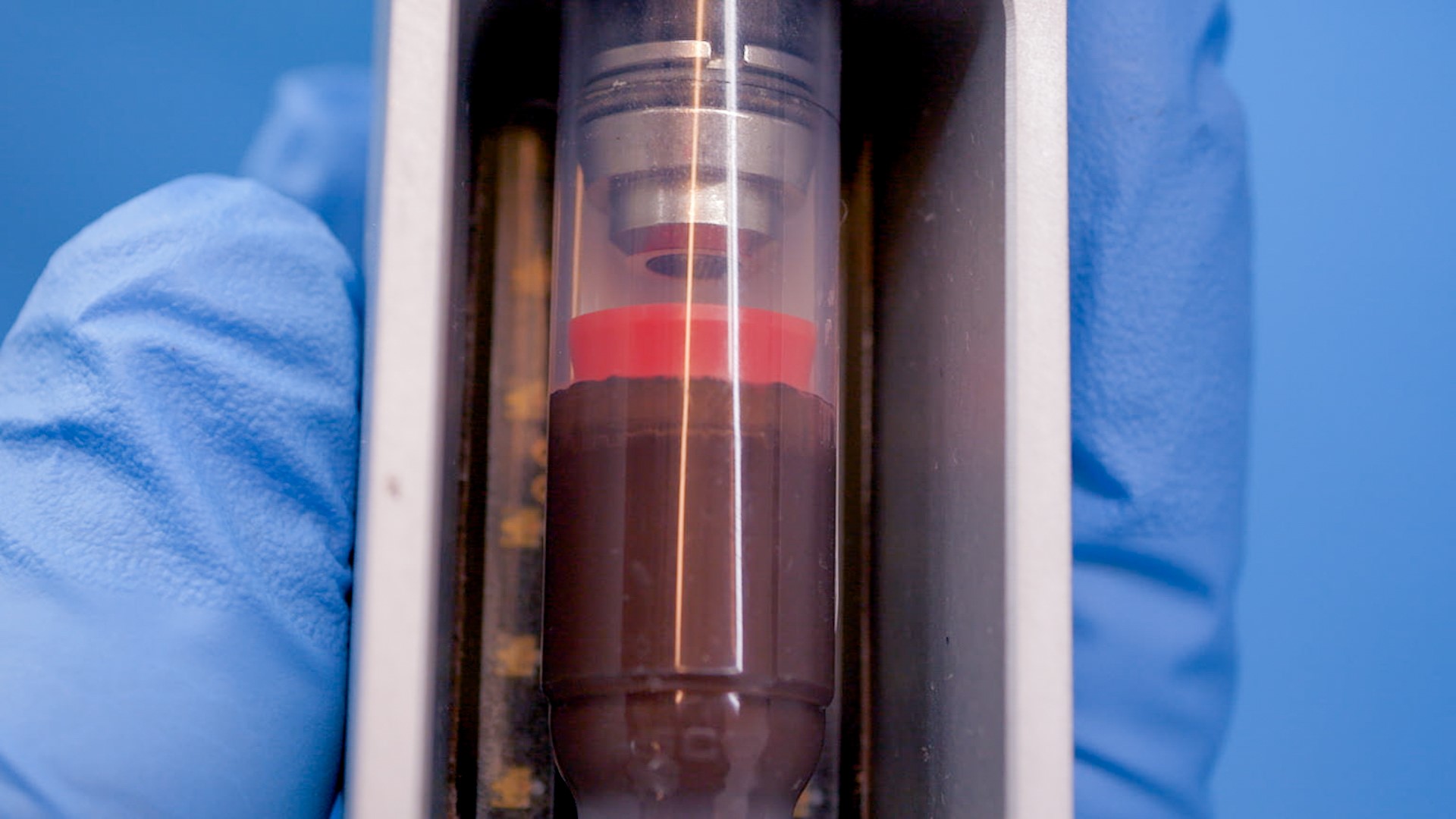
Creating the RFID tag
We set out to create a high-performance RFID tag using our own custom antenna design, printed with Copprint’s LF-301 ink, an ink specifically formulated for use on paper substrates.
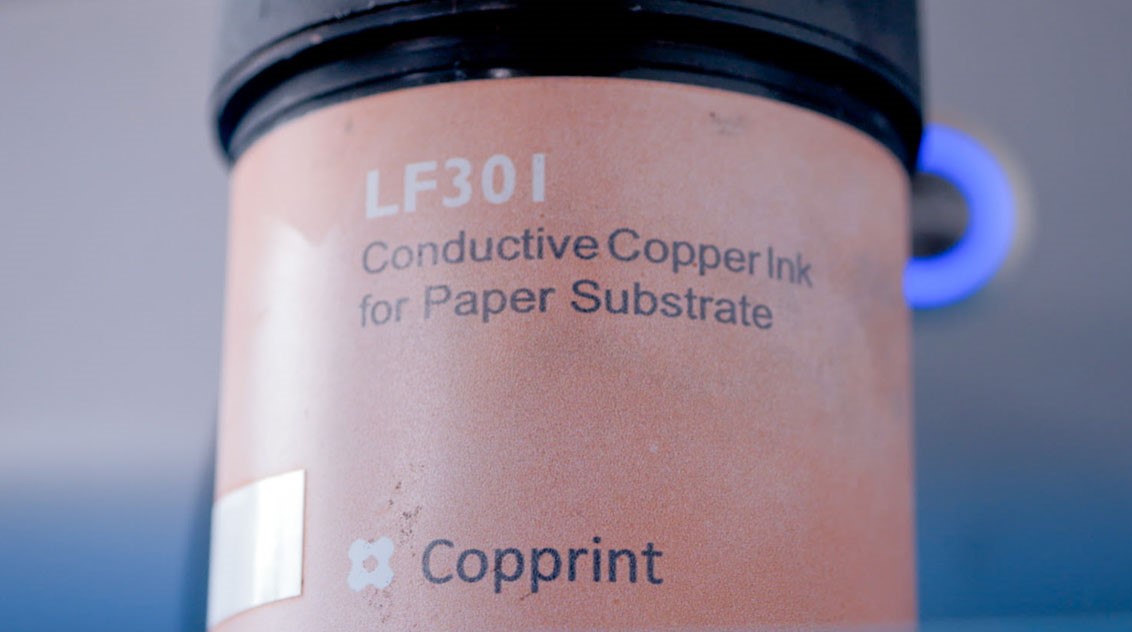
Using Voltera NOVA’s high-speed prototyping capability, combined with leading design software, we designed a tag in-house that could perform just as well, if not better than industry standard tags.
Step 1: design the tag
Using Autodesk Eagle we laid out the pattern for the antenna using the meander half-dipole antenna topology, commonly used in RFID. This design prioritises all-around performance by emphasising both near-field and far-field performance, while reducing space requirements and providing a lot of tuning possibilities. Once the preliminary design was complete, gerber files were exported for the next steps.
Step 2: simulate the tag
Since it can be challenging to properly characterise performance of an RF system, we first performed simulations of our design to determine its expected performance. Using MATLAB Antenna Toolbox, the preliminary antenna design was simulated and iterated upon. To obtain the desired performance characteristics including antenna sensitivity and directionality, the geometry of the antenna was fine-tuned.
The finalised design had a minimum self-reflection coefficient (S11) of –29.42dB at 922.50MHz, passing the required maximum of –10dB. This is also known as the resonant frequency where the tag will function best, which is well within the 902MHz and 928MHz frequency bandwidth for North American RFID tags.
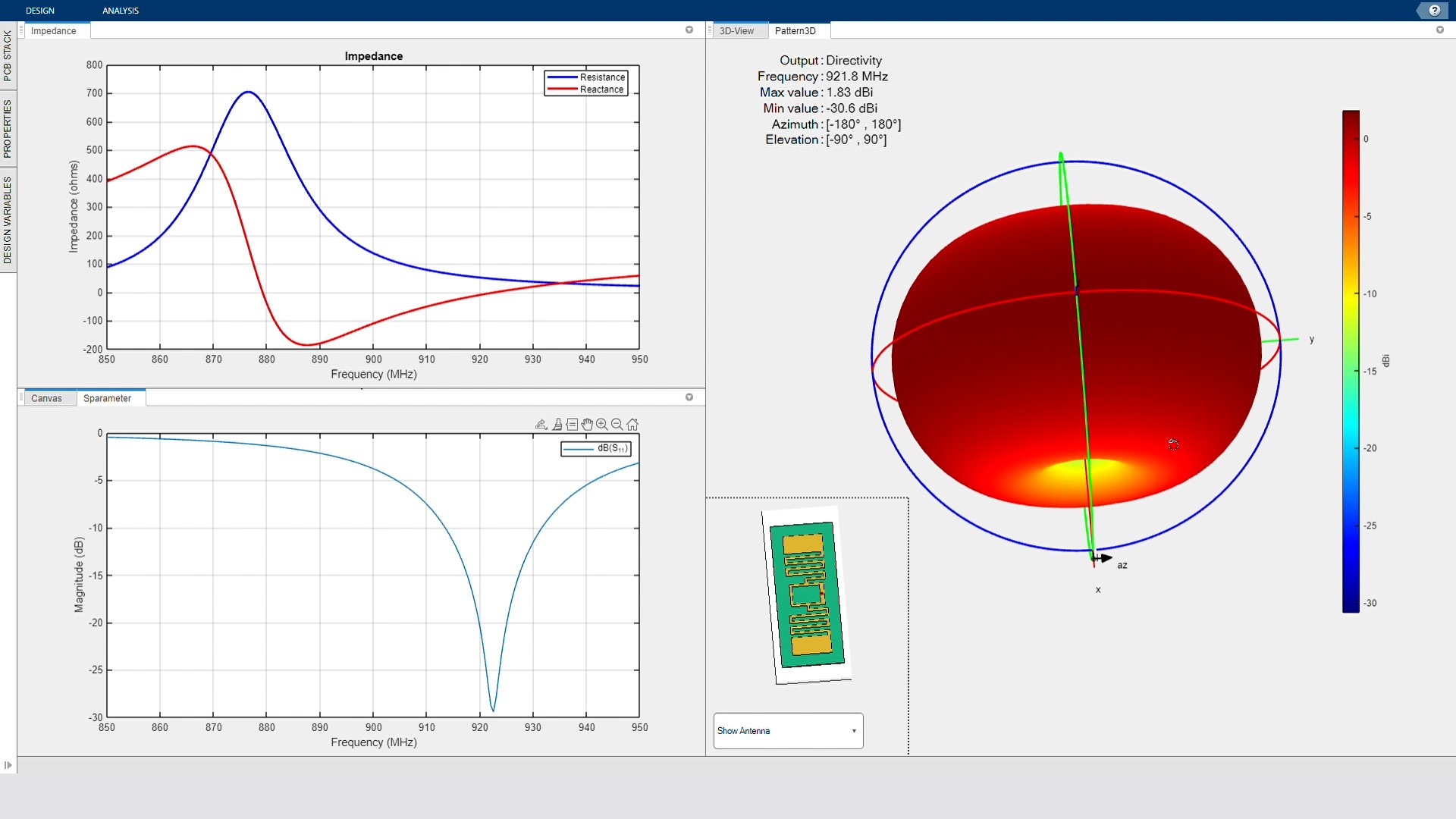
Step 3: print the tag
After iterating, the design was finalised. We imported our files into NOVA’s software, then calibrated the Copprint LF-301 nano copper ink using NOVA’s integrated workflow to generate the appropriate ink settings. After experimenting with multiple nozzle geometries on the Smart Dispenser, best performance was obtained using a Nordson EFD 0.004” Optimum Chamfered Tip nozzle with a custom ink profile generated with NOVA’s calibration workflow.
Once the ink was calibrated, a cardstock paper substrate was secured on the Vacuum Table Module. The design was then printed using NOVA, with each RFID tag taking less than 15 minutes to print.
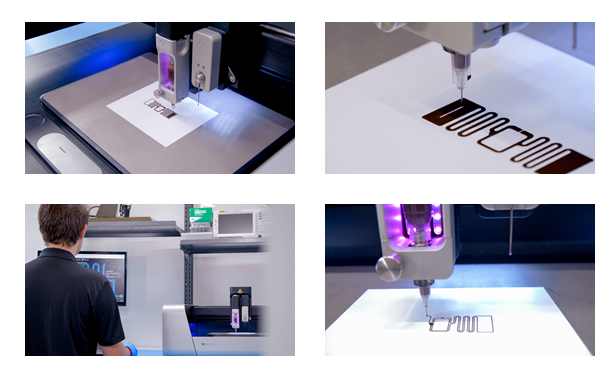
Step 4: prepare the tag
After printing, we completed post-processing of the tag in order to properly unlock the potential of this ink. Copprint provided guidelines for this on their website.
First, the RFID tag has to be dried in order to prepare it for further processing. It was placed in a blast dry oven for five minutes at 80°C.

Next, the print must be sintered. Sintering is the process of chemically bonding the different microscopic sections of copper together to form one continuous conductor. This process is essential to unlock the full performance of nano copper inks. For Copprint, sintering was achieved by placing our print in our hot-press for 15 seconds at 270°C.
Once this process is complete, we burnish the surface to prepare it for soldering.
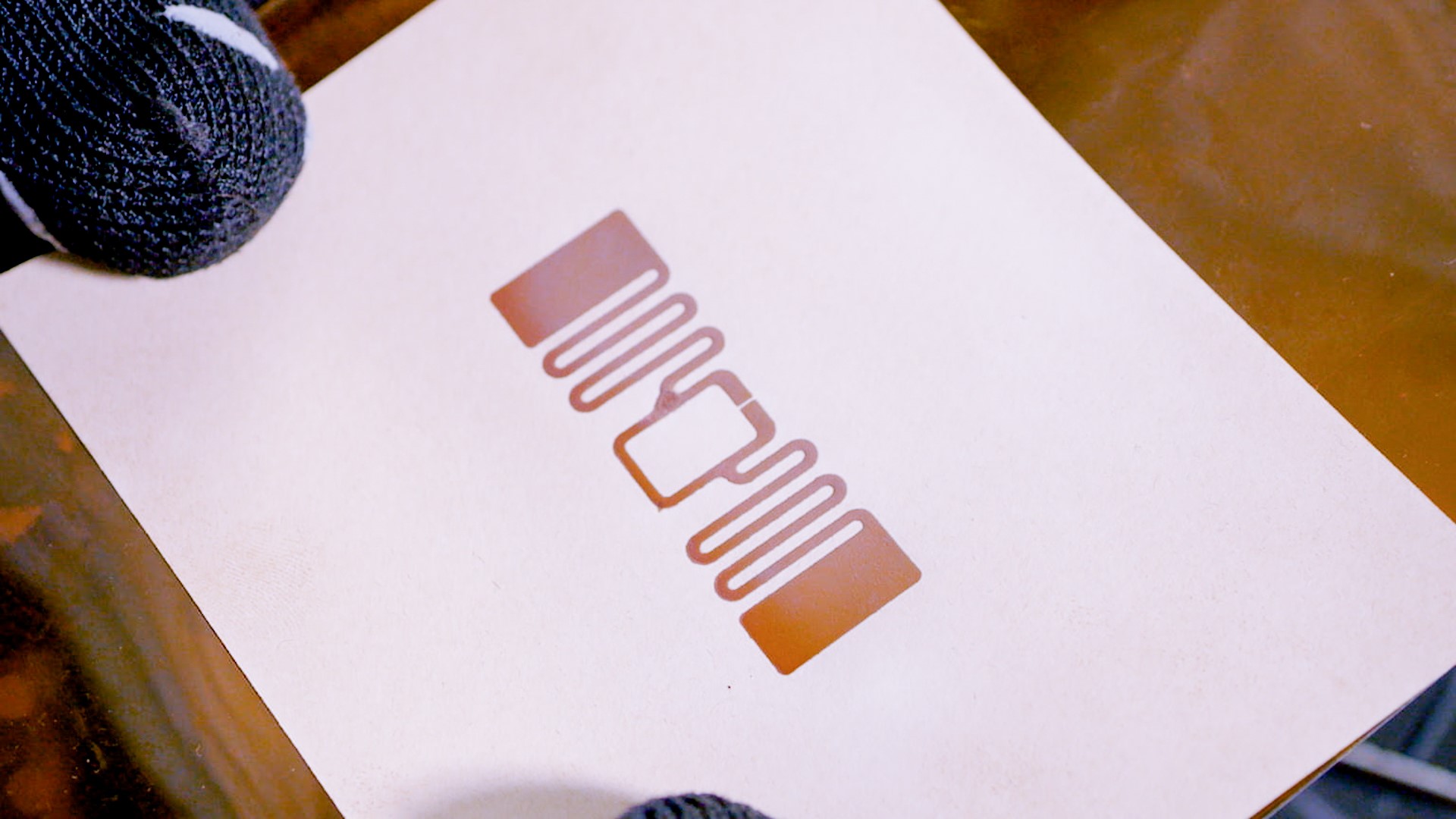
Step 5: solder the tag
Upon completion of post-production, we attached the RFID controller IC to the antenna to complete the RFID tag. In production, a special adhesive known as anisotropic conductive adhesive (ACA) is often used to attach RFID IC’s to the antenna. However, since Copprint LF-301 behaves like copper, the IC could be soldered after sintering of the antenna was complete. Using solder paste and an air reflow station, the transceiver IC was bonded to the printed antenna.
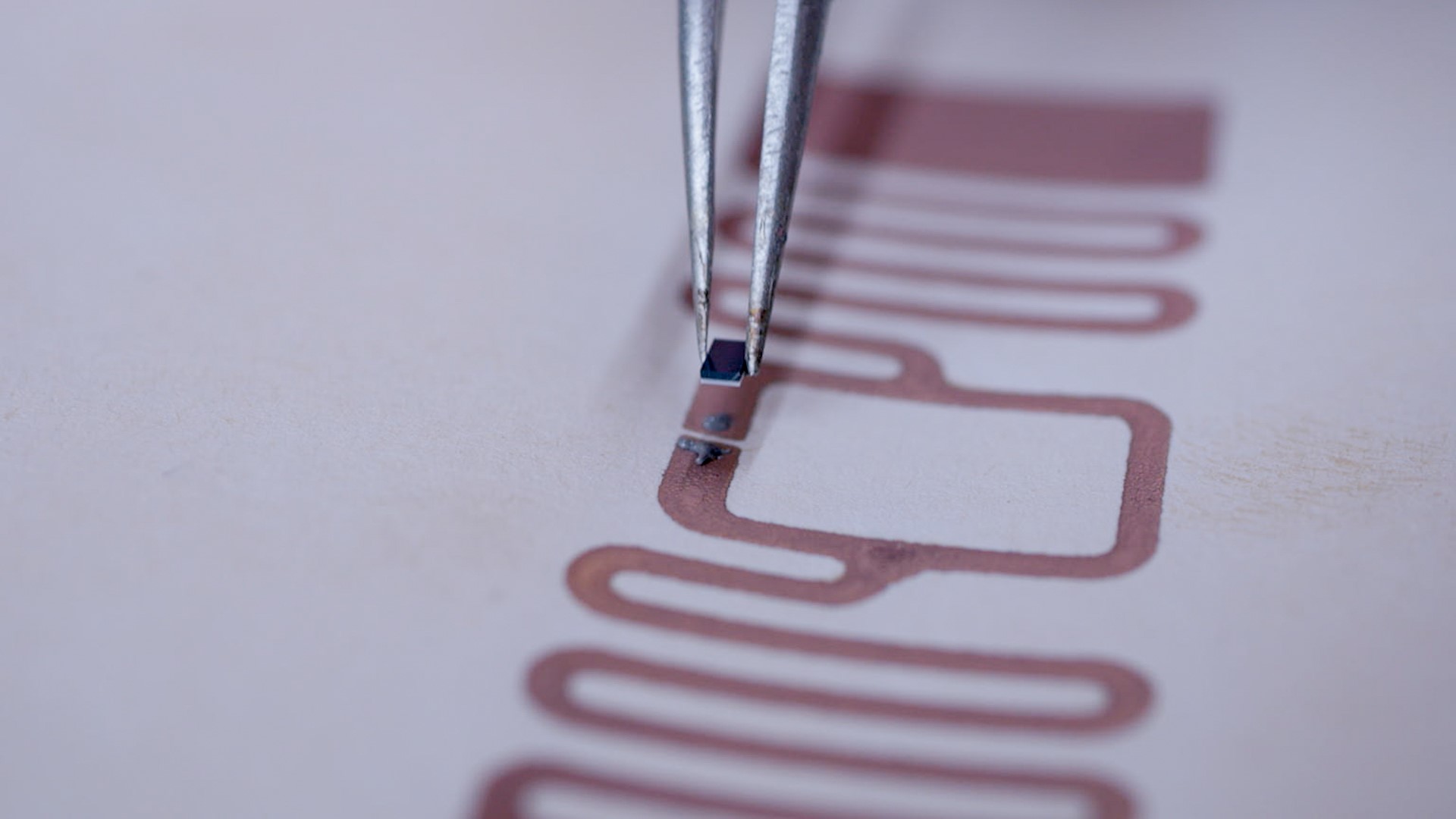
Results
In the end, the RFID tag performance exceeded that of off-the-shelf RFID tags bought from market leaders. When tested side by side, we see the potential of nano copper ink RFID tags; while the commercial tags we acquired were made of a non-recyclable laminate, our RFID tag was composed simply of paper and copper ink, which made it compostable. In addition, our tag would be more cost effective to produce at scale.
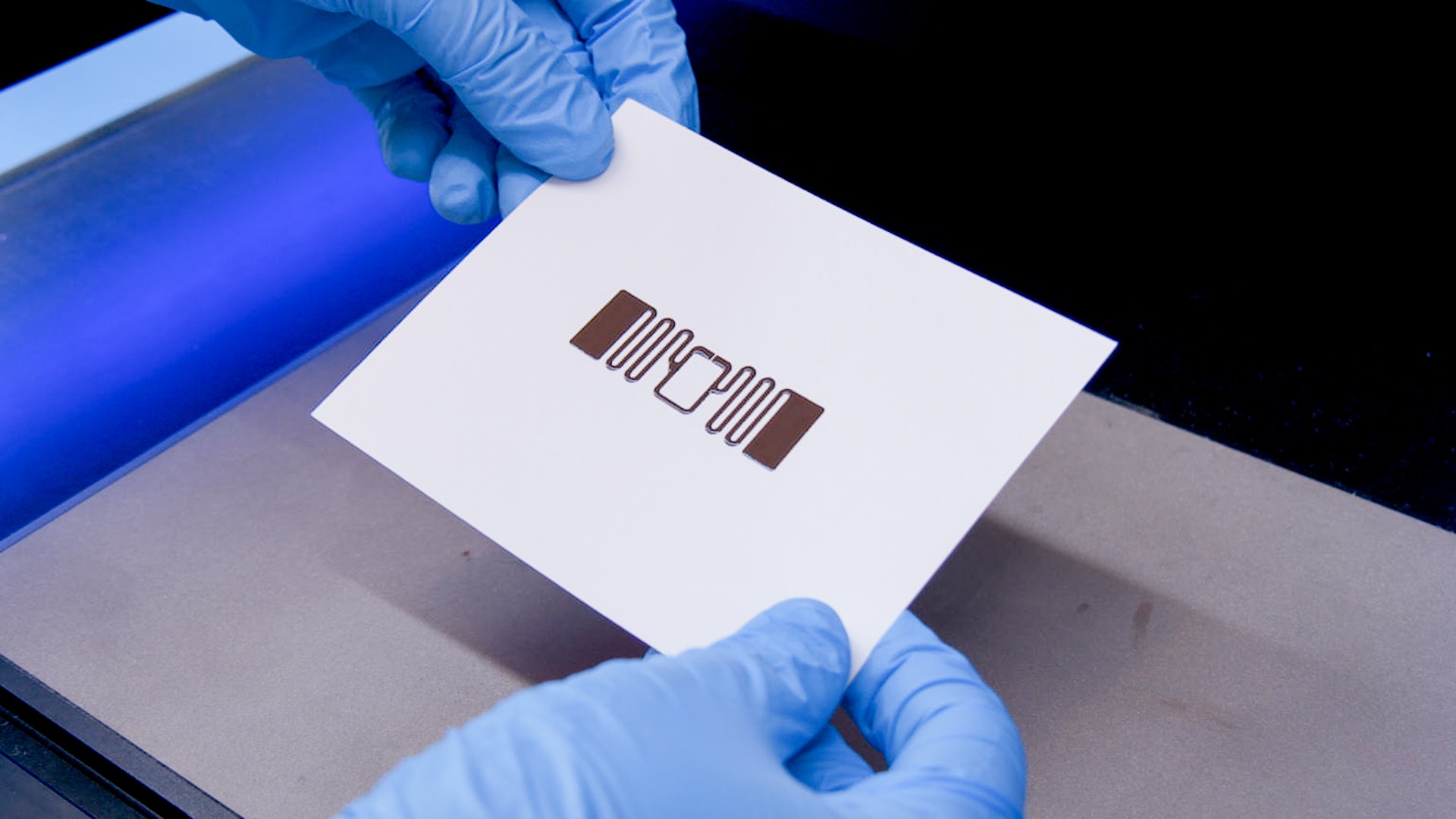
Using NOVA enabled us to produce this RFID tag in-house with no upfront capital costs such as screen-printing screens. We only required the purchase of Copprint’s LF-301 ink. Additionally, by leveraging NOVA’s modular Smart Dispenser and built-in ink calibration workflow, we were able to get up and running with a new material very quickly. All of this resulted in a print time of 15 minutes per tag, enabling many design iterations each day rather than one iteration per week.


